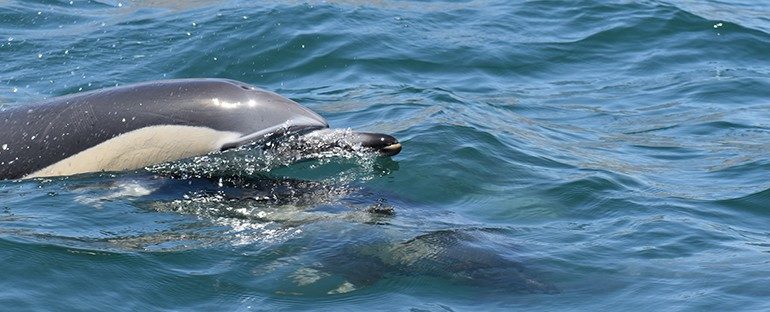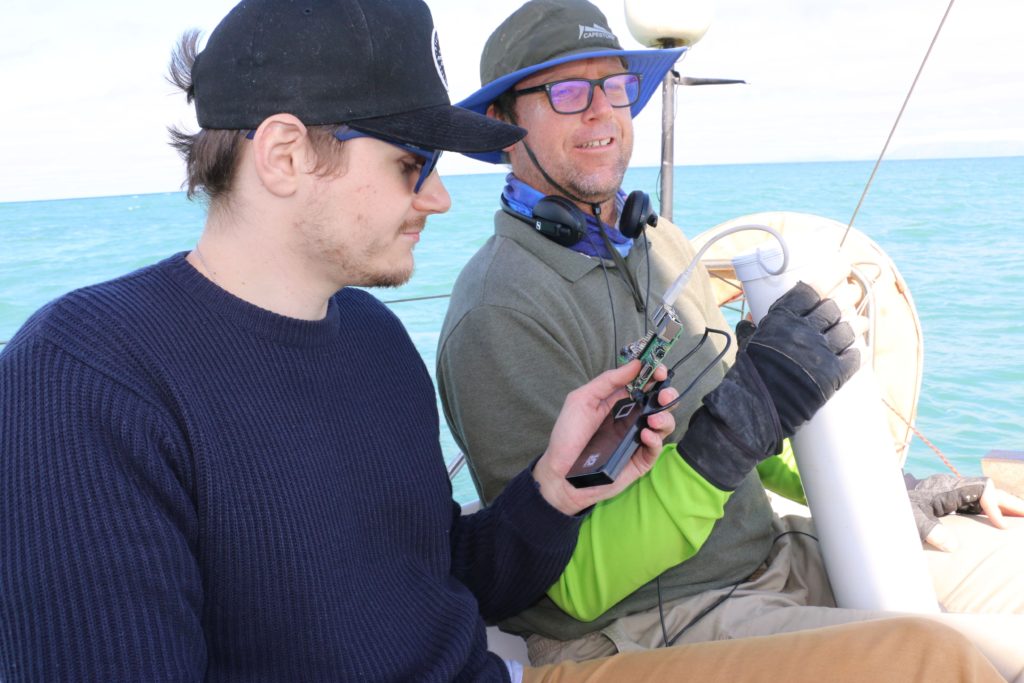The Department of Science and Technology’s Marine Research Plan focuses on understanding the role of biodiversity in maintaining ecosystems’ functionality, the relationships between human pressures and ecosystems, and the impact of Global Change on marine ecosystems. The Research Plan identified specific research themes including oceans and marine ecosystems under global change, ecosystems, biodiversity and biodiscovery, and coastal and marine resources, society and development. Investigating and developing signal processing algorithms for underwater acoustic signals to detect, classify and track cetaceans forms part of the third theme of the Plan.
A good representation of overall marine ecosystem health is evident from the abundance and state of marine mammal populations. Nevertheless, various factors including climate change and human activities can affect these ecosystems. However, the effective monitoring and management of marine living resources – where these living organisms inhabit a vast, mainly inaccessible and hostile environment – requires innovation and the use of the best available technologies and methods.
1. There are some challenges to monitoring cetacean populations
Passive acoustic monitoring (PAM) is fast becoming one of the main tools to estimate cetacean populations. However, monitoring cetacean populations can be very difficult due to the challenges inherent in observing animals at seas such as limited daylight, ocean conditions, and costs. Further, the ability to acquire acoustic data from the oceans requires a vast amount of data to be processed which currently exceeds the ability to process the data. This means that more powerful and more efficient methods are required to obtain information about the behaviour and movements of vocal animals from underwater sound recordings.
2. Addressing the challenges
The challenges mentioned above can be addressed using signal processing to develop important measurement techniques applied to the marine environment. The project currently underway at the Department of Electrical & Electronic Engineering focus on two aspects, namely, “algorithms to track cetaceans monitored by passive acoustic systems, and also algorithms to detect and classify cetaceans recorded with passive acoustic monitoring”. In this regard, various algorithms are proposed, such as the MUSIC, ESPRIT and Prony’s algorithms. However, these algorithms have not seen widespread application in Sonar and underwater acoustic systems. Part of this project is to research and investigate low complexity algorithms better suited to underwater acoustic systems.
The second focus of this project is to work on automatic detection and classification to contribute new algorithms with improved performance. It will further focus on developing classifiers and detection algorithms specific to South African sea life specifically the Heaviside Dolphin, endemic to the West coast of Africa.
Finally, this project also sets out to fulfil a subset of shortages, particularly the development of passive acoustic measurement techniques to detect, track and identify marine mammals. The main aim is to develop and evaluate new algorithms to fulfil these functions of which a small portion of the work include the development of actual hardware and integration of platforms.
3. Conclusion
To summarise, the main potential impact of this research is on bio-economy, more specifically, Operation Phakisa. In particular, this project aims to develop signal processing tools that will support biologists and policymakers in their decision making concerning Marine Protection and Governance. The tools can also be used to monitor our diverse marine life, which is a unique advantage of South Africa. Lastly, this project will have a big focus on human capacity development. In particular, the aim will be to deliver new PhD and MSc students in the field of passive acoustic monitoring.
Based on the following research: https://ieeexplore.ieee.org/document/8957435






